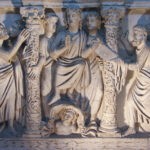The Historical Evidence for the Resurrection of Jesus: A Detailed Analysis
Introduction: Exploring the Resurrection of Jesus
The resurrection of Jesus is the cornerstone of Christian faith, making it one of the most debated events in history. The question of whether Jesus truly rose from the dead carries significant theological and historical weight. In this article, we delve into the historical evidence surrounding the resurrection, discuss its implications, and examine how scholars approach this monumental event. We will explore the three core facts supporting the resurrection and address common critiques regarding the validity of these accounts.
The Three Core Facts of the Resurrection
The historical evidence for the resurrection can be summarized under three main facts, which serve as the foundation for the belief that Jesus rose from the dead. These facts are widely accepted by both Christian scholars and secular historians who study the period.
1. The Empty Tomb
The discovery of the empty tomb by a group of Jesus’ women disciples on the Sunday following his crucifixion is the first key piece of evidence. The fact that women, whose testimony was often disregarded in ancient times, are mentioned as the primary witnesses strengthens the authenticity of the account. If the story were fabricated, it is unlikely that the authors would have chosen women as the main witnesses in a culture that placed little value on their testimony.
2. Post-Mortem Appearances
The second fact involves the post-mortem appearances of Jesus. Various accounts in the New Testament describe how Jesus appeared to his disciples and followers after his death. These appearances were not isolated events but occurred multiple times and were witnessed by different groups, including individuals and large crowds. The consistency of these reports across different sources adds weight to their historical credibility.
3. The Origin of the Disciples’ Belief
The third fact focuses on the origin of the disciples’ belief in the resurrection. Following the crucifixion, the disciples were scattered, fearful, and in despair. However, something transformed them into bold proclaimers of Jesus’ resurrection. The belief that God raised Jesus from the dead is difficult to explain without the resurrection itself. The sudden shift in the disciples’ behavior and the rapid spread of early Christianity suggest that they genuinely believed they had encountered the risen Jesus.
Christianity’s Foundation: The Resurrection and Historical Evidence
It is essential to differentiate between the fact of Jesus’ resurrection and the evidence supporting it. Christianity, as a faith, stands on the fact that Jesus was resurrected. However, it does not solely rest on the historical evidence for the resurrection. While it might be surprising that evidence for such an extraordinary event exists, it is important to acknowledge that many historical facts are accepted despite limited or no direct evidence. This perspective allows for an understanding of Christianity that is not entirely dependent on the availability of concrete historical proof.
Initial Research and Questions
When beginning the investigation into the resurrection, one might naturally question whether the New Testament accounts of Jesus’ resurrection were influenced by legend. Early researchers anticipated that these narratives might have been shaped by mythical traditions or later embellishments. However, further exploration of the historical traditions that lie behind the New Testament accounts reveals that they are rooted in earlier sources, bringing us closer to the original events themselves. One of the most significant discoveries was that Paul’s account in 1 Corinthians 15 likely draws from an ancient formula that dates back to within five years of the crucifixion. This early testimony lends credibility to the resurrection accounts.
Critiques of the Resurrection Accounts
Many scholars who are not believers remain unconvinced by the evidence for a bodily resurrection. One common critique is that the gospel narratives contain inconsistencies. For instance, some scholars argue that the gospel of Mark, thought to be the earliest, does not include post-resurrection appearances in its original ending. Others point to apparent contradictions, such as whether Jesus appeared to his disciples in Galilee or Jerusalem.
However, these inconsistencies often concern secondary details rather than the core of the resurrection narrative. Most scholars agree that minor differences in historical accounts are expected. In fact, the historical core of the resurrection story remains consistent across the gospels and Paul’s letters. The central claim that Jesus was resurrected is not undermined by these variations in the details.
A Closer Look at Alternative Explanations
One of the more sophisticated critiques of the resurrection centers on the distinction between a physical and spiritual resurrection. According to this view, Paul, who wrote earlier than the gospels, envisioned a spiritual resurrection rather than a physical one. Critics argue that the gospels, written decades later, introduced the idea of a bodily resurrection to address theological concerns.
In response to this critique, it is important to clarify that Paul’s reference to a “spiritual body” in 1 Corinthians 15 does not imply an immaterial or non-physical form. For Paul, a “spiritual body” refers to a body dominated by the Holy Spirit, in contrast to the natural body, which is mortal and subject to decay. This interpretation aligns with the belief in a physical resurrection, where Jesus’ body was transformed into an incorruptible, glorified state. Most scholars who study Paul’s writings agree on this interpretation, making it unlikely that Paul viewed the resurrection as merely spiritual.
The Significance of the Physical Resurrection
While some may argue that the resurrection of Jesus does not hinge on whether his body was physical, the idea of a bodily resurrection holds great theological significance in Christianity. The physical resurrection affirms the belief that Jesus conquered death, not just in a spiritual sense, but in a tangible, bodily form. It reinforces the hope of a future resurrection for believers, where they, too, will experience a renewed, glorified body. Though the truth of the resurrection may not solely depend on the physicality of Jesus’ body, the evidence strongly supports a bodily resurrection, and this belief remains central to Christian theology.
Conclusion: The Power of the Resurrection Evidence
The historical evidence for the resurrection of Jesus is remarkably strong, especially when considering the ancient sources and early testimonies that support the event. While critiques and alternative explanations exist, the core facts—Jesus’ empty tomb, his post-mortem appearances, and the transformation of his disciples—provide compelling reasons to believe that Jesus was truly raised from the dead.
For those interested in further exploring the historical evidence and theological implications of the resurrection, I encourage you to visit the full discussion on the subject. You can find more insights and detailed analysis in this engaging conversation: here.





